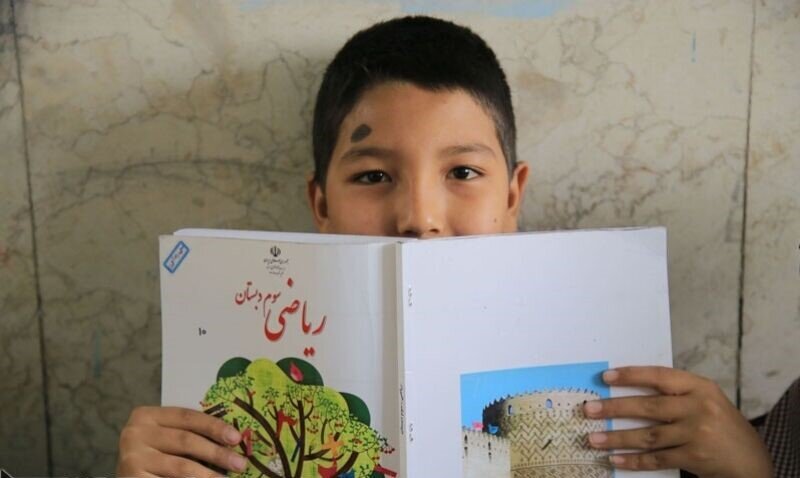Iran spends $335m a year on foreign students

TEHRAN – Some $335 million is spent annually on the education of foreign students in Iran, Mehdi Fayyazi, the deputy minister of education for international affairs and schools abroad, has said.
The figure is tantamount to 527 dollars per student, he added.
He stressed that there is no discrimination between Iranian students and foreign nationals in the country.
About 22,000 classrooms nationwide have been allocated to the education of foreign nationals, IRNA quoted Fayyazi as saying.
"Some 17 million euros in international aid is received annually to spend on the education of foreign students,” he said, highlighting that the figure is very low."
International organizations have so far built 88 schools in the country, and 23 more schools are under construction, the official noted.
In the Iranian calendar year 1400 (March 2021-March 2022) the government received 1.5 trillion rials (about $3 million) in aid from international organizations, which rose to 10 trillion rials (about $20 million) next year.
There are 11 international schools in the country, most of which are non-governmental. Also, 75 schools for Iranian students have been established in 35 countries, he concluded.
Leader’s decree
Leader of the Islamic Revolution Ayatollah Seyyed Ali Khamenei issued a decree in May 2015 that allows all foreign nationals, even those who have no identification and are living in Iran illegally, to attend schools in the country.
Relying on moral and Islamic principles, the government of the Islamic Republic of Iran has created equal conditions in benefiting from educational opportunities for Afghan students.
In the previous school year that started on September 23, 2021, some 556,000 Afghan students studied in Iranian schools.
The Ministry of Interior has announced to the Ministry of Education a list of 200,000 Afghan children who have the conditions to study in Iranian schools, Ali Hamedi, an official with the Education Ministry, said in November 2022.
The Ministry of Education has the capacity and potential to provide them with educational conditions and facilities equal to other Iranian students, he added.
“We are trying our best to make Afghan students living in Iran go to school, and one of our approaches in this field is to help develop and increase standard educational physical spaces,” he noted.
“Our annual fund is partly financed by the Ministry and partly by the United Nations High Commissioner for Refugees. If we allocate it to schools where only Afghans study, we cannot provide education to those who study with Iranian nationals,” he explained.
Afghan students can also take the exam of elite educational centers and compete in equal conditions with other Iranian students and continue their studies in exceptional talents schools, he stated.
The literacy rate among refugees has increased significantly in recent decades. So that the literacy rate of Afghan immigrants in Iran is higher than the number of literate people in Afghanistan, according to a report published in June 2022 by the research center of the Iranian Parliament (Majlis).
Iran is home to over 800,000 registered refugees and some 2.6 million undocumented Afghans. Today, more than 500,000 Afghan children- including undocumented Afghans and those who have newly arrived in Iran following the Taliban-takeover-are benefitting from Iran’s inclusive education policies, one of the most progressive in the world.
Many of the refugees living in Iran are second and third-generation, according to the UNHCR.
Iran is among the 15 successful countries in attracting international university students, according to Mohammad Javad Salmanpour, the deputy head of the Organization for Student Affairs.
The education of foreign students in Iran has grown significantly compared to previous years, even last year, it has doubled, he said.
Iran has the ability and capacity to have more than 250,000 foreign students by 2026, he stated.
These students are studying in different fields of science, research and technology, health and medical education, and also in the fields of humanities, Islamic sciences, Persian language, and literature, law, fundamentals of Islamic law, management fields, economics, psychology, social sciences, as well as engineering, agricultural sciences, animal sciences, and basic sciences.
The majority of the foreign students who are studying in Iran are Afghans and the rest are from Bangladesh, Pakistan, Iraq, and other countries.
It is intended to make education easier to achieve and not a single student to drop out of school by building schools for foreign citizens.
The Seventh National Development Plan (2023-2027) has obliged the Ministry of Science to increase the number of foreign nationals studying in the country.
The plan emphasizes the need to boost science diplomacy by increasing foreign students by up to 10 percent, IRNA reported.
It also highlights admitting non-Iranian scientists in research and technology education fields in universities and government institutes, as well as developing student exchange programs.
Currently, more than 94,000 foreign students are studying in Iran, of whom 24 percent (about 27,000 students), are studying in government universities.
Therefore, international students comprise about three percent of some 3.2 million university students studying in the country.
The minister of science, research, and technology has said the situation will be facilitated for foreign nationals to study in the country’s universities.
The universities highly welcome foreign students and there is constructive competition between the universities in this field, Science Minister Mohammad-Ali Zolfigol has said.
In fact, the ground is ready and the conditions should only be eased to increase the number of foreign students, he added.
“Plans are underway to facilitate the issuance of visas for non-Iranian students as much as possible.”
MT/MG
Leave a Comment